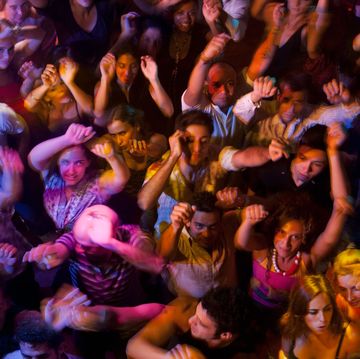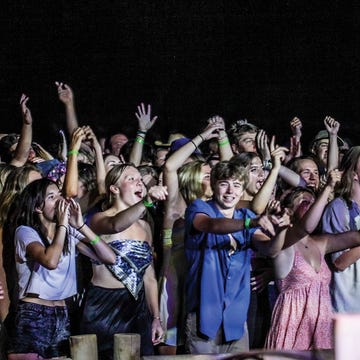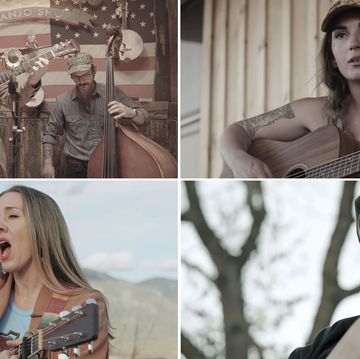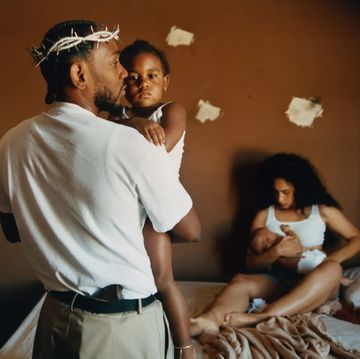In 1968, when the second gates of Folsom Prison clanked shut behind Johnny Cash, the king of outlaw country said that what he heard was the sound of permanence. Fifty years later, the Mexican norteño band Los Tigres del Norte followed Cash’s steps almost breezily—waving and smiling in their all-black cowboy ensembles. If Cash heard the hollowing reverb of forever upon entering Folsom Prison, decades later, Los Tigres del Norte filled it with strident accordions.
This article appears in Issue 29 of Alta Journal.
SUBSCRIBE
Today, California’s second-oldest prison no longer houses a majority-white inmate population. By 2018, nearly half of the male inmates and over one-third of the female inmates in California were of Latino origin. Like Folsom and other facilities in California, the United States had witnessed a prolonged demographic shift that transformed the country’s aural landscape. Spanish is the second-most widely spoken language in the U.S. So-called Latin American musical genres flood American music charts. Ballads honoring heroes of the underclass, played both in 3/4 waltz time and in a quicker 2/4 polka rhythm, pulsate from restaurant kitchens, often competing with the English-language Top 40 that plays for the customers in the dining area.
The number of people of Mexican origin living in the United States totals almost 40 million and defies the notion that there is a cultural separation between these two countries. The proximity is acutely felt in the arena of country music, a genre metonymic to American culture. But much of the genre’s history cannot be extricated from the Mexican landscape.
In the early 1930s, “border blaster” stations operating south of the Rio Grande, in states like Coahuila and Tamaulipas, broadcast early country music in Spanish and English. Acts like the Carter Family would be played alongside Rosa Dominguez, “the Mexican Nightingale.” While living near the border, Maybelle Carter had picked up Mexican guitar styles and incorporated them into her music. Performers like Cash, Hank Thompson, and Kris Kristofferson grew up listening to these radio stations, as did their fans.
In the following years, much of the Mexican music industry moved near and across the border, catering to the communities that sprang up at the height of the Bracero Program.
By the mid-20th century, Mexican music had exchanged sonic DNA with country music, much of which was borne out of Scottish folk songs and Black gospel and spirituals. It also drew from ballads known as corridos, narratives that celebrated bandit heroes. Many of these songs were performed against a norteño ensemble featuring an accordion, a bajo sexto, and a handmade contrabass, a legacy of German influence in the country.
Once the Bracero Program ended in the 1960s, ushering in an era of ambiguous immigration policies, the outlaws and bandits portrayed in many songs found new resonance with those who were marginalized, displaced, and forgotten by their own country. These Mexican ballads found their lovelorn match in American country songs, each borrowing melodies and tunes from the other. As the Texan and AmeriChicana fiddler Carrie Rodriguez recently said in an interview, “so much of Mexican music is country music.”
For decades, heroic figures appeared in songs such as “Pancho and Lefty,” whose protagonists traverse the dusty Mexican deserts and the cold plains of Ohio amid swooning horns. Or George Strait’s cover of “El Rey,” an early popular version of which was sung by Mexican ranchero Vicente Fernández. Or Dwight Yoakam and Buck Owens’s accordion-lined “Streets of Bakersfield.” (The song has since been reinterpreted by Los Hermanos Mendoza.)
Many of these musicians have also appeared in their rhinestone cowboy personas, outfitted by Manuel Cuevas—the master tailor from Michoacán who worked behind the scenes in Nudie Cohn’s sartorial emporium in North Hollywood. For decades, Cuevas dressed luminaries like John Wayne, Gene Autry, and Porter Wagoner, inspired by Mexican patterns and Indigenous weaving techniques. The image of the baroque Mexican cowboy-rancher is so pervasive in the American imagination that a mariachi band recently covered Creed’s “Higher” during a Texas Rangers–New York Mets baseball game.
Today, some of the most influential imprints in música mexicana are headquartered on the West Coast. Their up-and-coming stars sell out shows in New York City. Their music is often heard at jaripeos, the Mexican rodeos held in fields from New Jersey to Washington State.
Since the genre’s inception, myriad artists have attempted to recast country music in its more truthful image—especially when it comes to its Black roots and the history of America writ large. Most recently, Beyoncé reframed herself as a synecdoche of America in Cowboy Carter. Author Jay Pitter writes of the album that instead of thinking of country music as a genre, we should approach it through the lens of cultural geography, eschewing its myth of authenticity that “[redlines] our collective imagination.” We might also focus Pitter’s lens on the cultural and physical terrain shared by the United States and Mexico. Country music cannot claim a singular cultural authenticity, especially not a national one.•
Vita Dadoo Lomeli is a bilingual journalist based in Mexico City and New York City. She writes on culture and the business of media.













